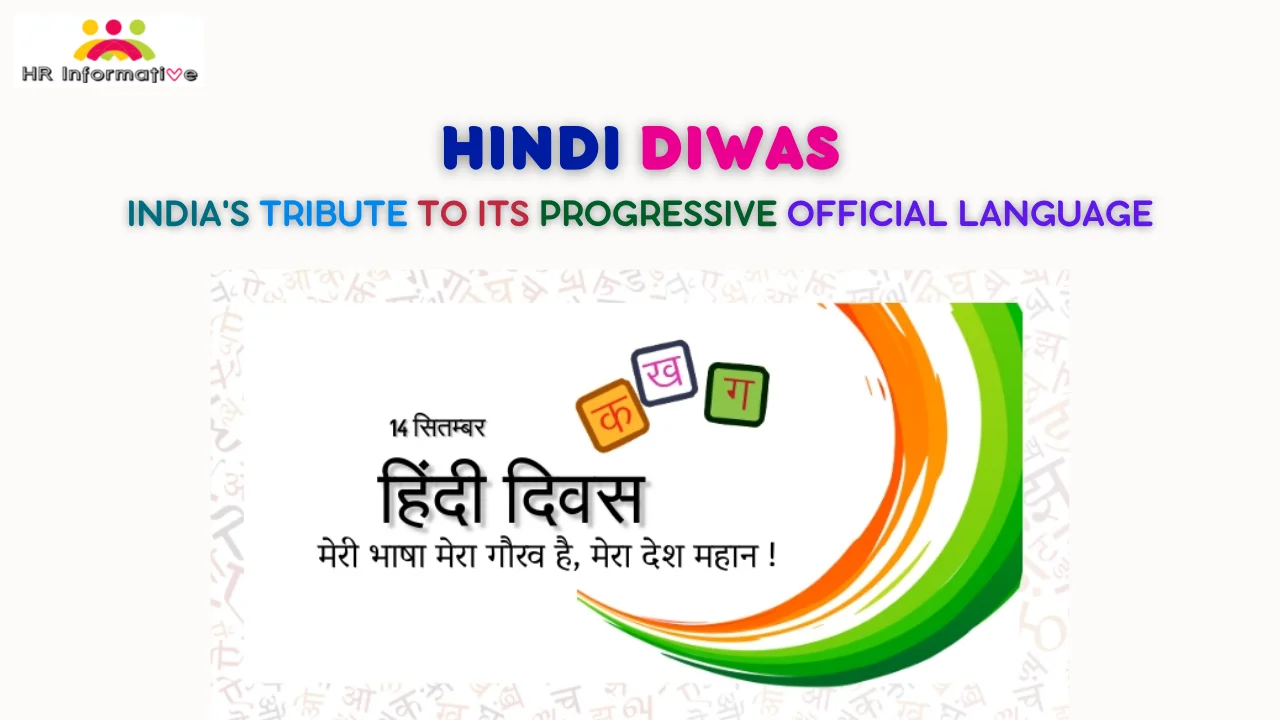Introduction
Hindi Diwas (Hindi Day) is an annual day celebrated on September 14 in India to mark the adoption of Hindi as one of the official languages of India. Hindi is one of the two official languages of India, along with English, and is the mother tongue of nearly 44% of the Indian population according to the 2011 census.
Hindi Diwas celebrations highlight the importance of the Hindi language and its vital role in uniting the culturally diverse population of India. The celebrations aim to promote the use of Hindi as a common language across the country and also attract young generations towards Hindi literature and culture. Various events are organized on Hindi Diwas by schools, colleges, offices and literary organizations to underline the significance of the occasion.
What is Hindi Diwas?
Hindi Diwas is celebrated every year on September 14 across India to commemorate the historic occasion when Hindi was adopted as one of the official languages of the Republic of India. On September 14, 1949, the Constituent Assembly of India had adopted Hindi written in the Devanagari script as the official language of the newly independent nation under the provisions of Article 343 of the Indian Constitution.
Along with English, Hindi was declared as an official language and the decision came into effect on January 26, 1950. Hindi Diwas marks the adoption of one of the two official languages of the Government of India and a widely spoken language of the country.
When is Hindi Diwas celebrated?
Hindi Diwas is celebrated annually on September 14. This day coincides with the birth anniversary of Beohar Rajendra Simha, who was a prominent advocate of Hindi as the official language. He is well-known for establishing the Bharatiya Vidya Bhavan educational institutions across the country to promote Indian art, culture and education.
Beohar Rajendra Simha chaired the first meeting of the Hindi Sahitya Sammelan in Allahabad in 1910 and campaigned for the recognition of Hindi. He passed away on September 14, 1964, and hence his birth anniversary was considered an apt day to mark Hindi Diwas every year.
Why is Hindi Diwas Celebrated?
There are several reasons why Hindi Diwas is commemorated each year:
- To remember the historic occasion when Hindi was adopted as an official language of the Republic of India in 1949.
- To honour the efforts of people like Beohar Rajendra Simha who lobbied hard for making Hindi an official language.
- To highlight the importance of Hindi as a unifying force for the whole of India.
- To promote the use of Hindi language across the country.
- To spread awareness about Hindi literature and heritage, especially among younger generations.
- To organize cultural events that celebrate Hindi language and its rich history.
- To provide a common platform for people from all walks of life to showcase their talent in Hindi language.
In essence, Hindi Diwas serves as an opportunity to celebrate one of India’s most popular native languages which is an inextricable part of the country’s identity. The annual celebrations reiterate the significance of Hindi as a national language and its role in uniting the diverse cultural fabric of India.
Read Also : One Nation, One Election: Examining India’s Bold Electoral Reform Proposal
History of Hindi Diwas
The Adoption of Hindi as an Official Language of India
The British ruled India for nearly 200 years from the mid-18th century to the mid-20th century. While the British used English for administrative purposes and imposed it as the language of education and official communication, the native languages of India suffered a setback. After independence in 1947, India needed to choose its official languages to conduct governmental work and affairs.
A debate ensued with multiple viewpoints emerging – should English continue as the official language or should native Indian languages be adopted for official purposes. The Constitution of India came into effect on January 26, 1950 and it declared that Hindi in the Devanagari script would be one of the official languages of communication for the Union government, along with English for a 15-year period.
This transition came into effect on January 26, 1965 as the whole country celebrated Republic Day that year. However, owing to protests and demands from non-Hindi speaking states, it was decided to indefinitely continue the use of English along with Hindi for official purposes.
The historic event when Hindi was constitutionally adopted as an official language is commemorated by celebrating Hindi Diwas every year on September 14. This decision enabled the gradual imposition of Hindi for official communication over the next few years, even though English remained in use too. Hindi gained prestige as it assumed an official language status.
The First Hindi Day Celebration
The first-ever Hindi Day was celebrated in 1953 to commemorate the adoption of Hindi as an official language. The Government of India started observing September 14 as Hindi Diwas from 1968 onwards to spread greater awareness about the significance of the occasion among the masses.
The 50th anniversary of Hindi as an official language was celebrated by organizing special Hindi Diwas events and programs across the country in 1999 when Hindi was completing its journey of 50 progressive years. A campaign called ‘Hindi Chetna Abhiyan’ was also initiated in 1999 to promote Hindi and increase its usage among both government officials and citizens.
Various literary conferences and youth conventions were held in different parts of India to mark 50 years of Hindi as Raj Bhasha. Rajbhasha Awards were initiated to recognize excellence in Hindi implementation. Some of the key objectives of Hindi Diwas celebrations since its inception have been – promoting the progressive use of Hindi in official work, propagating the cultural heritage of India through Hindi and highlighting the importance of Hindi as a national identity.
Significance of Hindi Diwas
Hindi as a Unifying Force in India
India is home to incredible diversity in terms of language. The 2011 Census reported 121 languages and 270 mother tongues spoken across the country. But for a multi-lingual country like India, having a common official language is important for political and cultural unity. Hindi helps unite Indians from different parts of the country who speak different mother tongues.
Despite strong regional influences, Hindi has emerged as the language that connects people across states and geographies. It is spoken and understood by the maximum number of Indians even though it may not be their first language. Hindi helps North Indians connect with South Indians, East Indians with West Indians as a link language. Most road signs, menus, advertisements, billboards feature Hindi along with regional languages and English.
So Hindi Diwas honours the unifying power of Hindi – as a force that binds India together amidst its linguistic plurality. It serves political, social and emotional purposes as a language of national integration. Hindi Diwas recognizes this valuable contribution of Hindi in uniting a diverse nation like India.
Hindi as a Cultural Symbol
Hindi is not just a communicative glue that binds India together, it is also an integral part of India’s cultural fabric that exudes the flavours, colours and smells of the country. The vocabulary of Hindi beautifully captures the nuances of Indian traditions, food, attire, relationships, music and dance.
Popular Bollywood songs are a cultural representation of India for the world and their catchy Hindi lyrics epitomize the liveliness and warmth of Indian culture. The evocative power of Hindi expresses India’s essence and ethos. Hindi literature and poems reflect Indian thought and philosophy.
Hindi Diwas celebrates the spirit of India, its hospitality, values and belief systems that Hindi encapsulates. It honours traditions rooted in the Hindi language. The objective of Hindi Diwas is also to popularize the usage of pure Hindi shabds that authentically capture India’s true culture instead of using abstract or foreign terms.
Hindi as a Language of Progress
While Hindi is a cultural asset, it also represents the language of growth and progress for India. Hindi is among the top 3 most spoken languages worldwide with about 609.5 million speakers. Hindi-speaking states in northern and central India are also some of the country’s top contributors to GDP and economic development.
Uttar Pradesh, Madhya Pradesh, Rajasthan, Chhattisgarh, Bihar with their Hindi-speaking populations are powerhouses driving India’s growth story. As a language understood across much of India, Hindi enables communication between business professionals, workers, government officials, media and academia. Economic expansion and national progress are hugely aided by the reach of Hindi.
Hindi Diwas is a reminder of how Hindi serves as a catalyst for development. It is a forward-looking language that continues to modernize and expand its lexicon to keep pace with current contexts. Hindi publishing, media, entertainment are booming industries. As India advances economically on the global stage, the role of Hindi multiplies in shaping national identity and purpose.
Ways to Celebrate Hindi Diwas
Hindi Diwas is celebrated across India through various events and activities that promote the Hindi language. Here are some popular ways in which schools, colleges, offices and literary organizations mark Hindi Diwas:
Organize Events and Programs
- Schools conduct essay writing, debate, extempore, painting and elocution competitions related to Hindi language and literature. Students eagerly participate in these events that allow them to showcase their writing and speaking skills in Hindi.
- Colleges organize Hindi poetry recitation sessions, literary seminars or youth conventions that provide a platform for students to demonstrate their flair for the language. Hindi scholars and professors are invited to address these events.
- Govt. offices and public sector companies hold Hindi workshops, typing tests and Mahaan Kavi Sammelans for their staff and officers. Hindi typing examinations are conducted on this day to test proficiency.
- Cultural associations and NGOs host Kavi Sammelans where poets are invited to recite their compositions in Hindi. Literary meets are organized to promote Hindi literati.
- Radio stations and television channels air special Hindi programs, sitcoms, interviews and talk shows to spread awareness about Hindi Diwas.
Learn about Hindi Language and Culture
- Students are encouraged to collect interesting facts and trivia about the evolution of Hindi as a language. Exhibitions are arranged to display this information across schools and colleges.
- Quiz competitions, LAN gaming and online contests based on Hindi language and literature are organized to spark interest among tech-savvy students.
- Traditional folk arts and dance forms of India originating from Hindi-speaking regions are showcased through performances.
- Books, documentaries, movies related to the history of Hindi literature are recommended for students. Essay writing competitions are organized on related themes.
- Recipes for popular Hindi-region dishes like dal-bati-churma, golgappas, lassi are shared and these food items are included in the menu for the day.
Use Hindi in Your Everyday Life
- Government offices commit to carrying out regular office work in Hindi on this day – from writing letters, filing paperwork to making public announcements and addressing phone calls.
- Shopkeepers, customers, street vendors and other professionals choose to communicate in Hindi rather than local languages or English.
- News channels broadcast the day’s bulletin completely in Hindi rather than their usual bilingual versions or English-only broadcasts.
- Children are encouraged to speak to their friends, neighbours and family in Hindi on this day instead of their regular medium of communication.
Conclusion
In conclusion, Hindi Diwas is an important day to spread awareness about the significance of Hindi as an official language of India and celebrate its contributions towards national integration. It is an opportunity to highlight that Hindi binds together India’s diversity through a common tongue.
Over the decades, celebrations of Hindi Diwas have become grander with active participation from schools, colleges, universities, radio, television, literary bodies and government organizations. In future, more creative use of technology can help engage the younger generation with Hindi language and literature.
As India progresses rapidly, we must ensure that our native languages especially Hindi keep pace and evolve as dynamic, futuristic languages. The upcoming generation of Indians should take pride in their linguistic heritage including Hindi. Languages like Hindi connect us to our vibrant culture while empowering global ambitions and technological leadership.
FAQs about Hindi Diwas
Q: Who started Hindi Day celebrations in India?
Ans: The first Hindi Day celebrations were organized in 1953 after Hindi was declared an official language. However, the Government of India started observing Hindi Diwas annually on September 14 from 1968 onwards to promote the usage of Hindi across the country.
Q: How is September 14 significant for Hindi?
Ans: September 14 is the birthday of Beohar Rajendra Simha, a prominent advocate for Hindi as the official language. He played a key role in lobbying for Hindi to gain official language status. September 14 also marks the adoption of Hindi as an official language in 1949 by the Constituent Assembly.
Q: How long has Hindi been one of India’s official languages?
Ans: Hindi was adopted as an official language by the Constitution of India on September 14, 1949 along with English. So it has officially held the status of Raj Bhasha or national language for over 70 years since India’s independence in 1947.
Q: Which states celebrate Hindi Diwas?
Ans: Hindi Diwas is celebrated across India but more enthusiastically in the Hindi-speaking states of North and Central India like Uttar Pradesh, Bihar, Madhya Pradesh, Rajasthan, Himachal Pradesh, Haryana, Chhattisgarh and Jharkhand.
Q: How can I celebrate Hindi Diwas at home / school / office?
Ans: You can celebrate by organising Hindi debates, poetry recitals, typing tests, competitions, cultural programs, conversing in Hindi with friends/colleagues, watching Hindi movies/shows, cooking Hindi dishes, etc.
You May Read Also :



